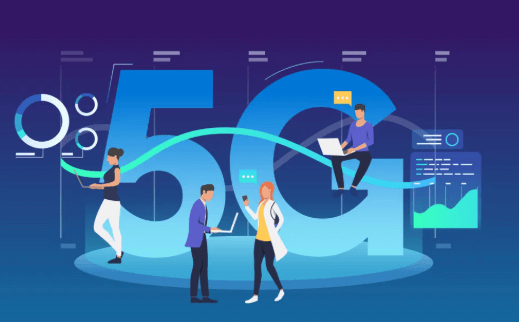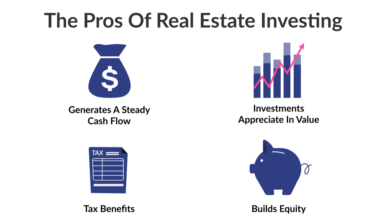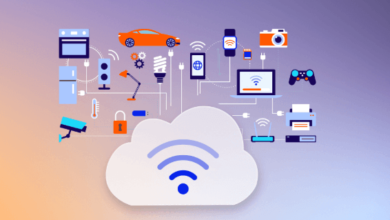5G Revolution: How Ultra-Fast Connectivity is Changing Our Lives

The 5G revolution is more than just faster internet—it’s a fundamental shift in how we interact with technology, each other, and the world around us. Promising speeds up to 100 times faster than 4G, near-instant response times, and unprecedented connectivity, 5G is set to transform industries, improve quality of life, and unlock new opportunities for innovation.
What is 5G?
5G, or the fifth generation of mobile network technology, is a monumental leap from its predecessor, 4G. Unlike 4G, which primarily improved internet speed, 5G emphasizes low latency, massive bandwidth, and reliable connections. This allows devices to communicate with virtually no delay, supporting real-time applications and significantly enhancing user experiences.
Some standout features of 5G include:
- Speeds exceeding 10 Gbps for lightning-fast downloads.
- Ultra-low latency, as low as one millisecond, enabling instantaneous communication.
- Enhanced capacity to connect billions of devices simultaneously.
How 5G Works
The magic of 5G lies in advanced technologies, including:
- Millimeter Waves: High-frequency waves that carry more data but require closer proximity to devices.
- Small Cells: Miniature base stations that enhance network coverage and reduce congestion.
- Massive MIMO (Multiple Input, Multiple Output): Antennas that improve data transmission and reception.
- Beamforming: A technology that directs signals precisely to devices, reducing interference and improving speed, can also be integrated with QR code systems for enhanced connectivity and user interaction.
These innovations collectively create a robust infrastructure for ultra-fast and reliable connectivity.
Transforming Communication
5G is revolutionizing how we communicate by:
- Enabling crystal-clear video calls with minimal lag.
- Powering augmented reality (AR) and virtual reality (VR) experiences for immersive interactions.
- Allowing seamless streaming of 8K videos and live broadcasts.
- Connecting IoT devices, such as smartwatches and home assistants, for uninterrupted functionality.
Imagine attending a virtual concert with friends worldwide, experiencing it in real-time as if you were there together. This is the power of 5G.
Impact on Healthcare
The healthcare industry is experiencing a renaissance thanks to 5G. Key applications include:
- Telemedicine: Doctors can consult patients remotely without compromising quality.
- Remote Surgeries: Surgeons can operate on patients across continents using robotic systems controlled via 5G.
- AI Diagnostics: Faster data transmission enables AI to analyze scans and detect diseases with unparalleled accuracy.
- Real-Time Monitoring: Wearable devices can track and transmit patient health metrics instantly, aiding timely interventions.
These advancements make healthcare more accessible and efficient, saving lives in critical situations.
Revolutionizing Transportation
From autonomous vehicles to smart traffic systems, 5G is driving the future of transportation:
- Self-Driving Cars: 5G enables vehicles to communicate with each other and infrastructure, ensuring safe navigation.
- Connected Infrastructure: Traffic lights, sensors, and road signs interact dynamically to optimize traffic flow.
- Real-Time Navigation: Travelers receive instant updates on routes, delays, and hazards.
- Drones: High-speed connectivity supports drone deliveries and surveillance.
With 5G, transportation becomes safer, smarter, and more efficient.
Industrial Applications
5G is a cornerstone of Industry 4.0, transforming manufacturing and logistics:
- Smart Factories: Machines communicate autonomously to optimize production.
- Robotics: High-speed connectivity improves robotic precision and coordination.
- Predictive Maintenance: Sensors transmit real-time data, predicting equipment failures before they occur.
- Augmented Workforce: Workers use AR glasses to receive instructions and monitor systems in real-time.
These advancements lead to higher productivity, reduced costs, and safer workplaces.
Transforming Entertainment
Entertainment is entering a new era with 5G:
- Ultra-HD Streaming: Buffer-free streaming of 4K and 8K videos.
- Immersive Gaming: Gamers experience low-latency multiplayer games and VR worlds.
- AR/VR Experiences: Realistic simulations for training, education, and fun.
- Live Events: Enhanced virtual attendance with multi-angle views and real-time interaction.
Whether it’s gaming, movies, or virtual tours, 5G ensures an unmatched experience.
5G and Smart Cities
5G is the backbone of smart cities, improving urban living through:
- Public Safety: Faster communication for emergency services.
- Smart Grids: Efficient energy distribution and monitoring.
- Traffic Management: AI-driven systems reduce congestion and improve mobility.
- Environmental Monitoring: Sensors track air quality, water levels, and other environmental factors.
Smart cities promise sustainability, convenience, and enhanced quality of life.
Challenges and Concerns
Despite its potential, 5G faces challenges:
- Infrastructure Costs: Building the network requires significant investment.
- Cybersecurity Risks: Increased connectivity makes systems vulnerable to cyberattacks.
- Privacy Issues: Data collection raises concerns about misuse.
- Health Concerns: Debates around radiation exposure persist, though no conclusive evidence supports harm.
Addressing these challenges is crucial for maximizing 5G’s benefits.
Global Rollout of 5G
Countries are racing to deploy 5G:
- Leaders: The US, China, and South Korea are at the forefront.
- Adoption Rates: Rapid in developed nations but slower in developing countries.
- Impact on Developing Nations: 5G bridges digital divides, offering new opportunities.
A global 5G network could reshape economies and foster inclusivity.
Economic Implications
The economic benefits of 5G are staggering:
- Boost to GDP: Trillions of dollars added to the global economy by 2030.
- New Industries: Innovations in AI, IoT, and automation.
- Business Models: Companies reimagine services, from streaming to autonomous delivery.
5G isn’t just an upgrade—it’s an economic catalyst.
5G and Sustainability
5G contributes to a greener planet by:
- Energy Efficiency: More data transmitted with less energy.
- Green Tech: Supporting renewable energy systems and smart grids.
- Carbon Reduction: Enabling remote work and reducing commutes.
These attributes align 5G with global sustainability goals.
Preparing for a 5G Future
Governments, businesses, and individuals must adapt to harness 5G’s potential:
- Governments: Invest in infrastructure and establish regulations.
- Businesses: Innovate products and services to leverage 5G.
- Individuals: Embrace new skills to thrive in a 5G-driven world.
Preparation ensures everyone benefits from this technological leap.
Conclusion
The 5G revolution is reshaping our world, driving innovation, and creating opportunities across industries. From healthcare to entertainment, transportation to sustainability, ultra-fast connectivity is the cornerstone of progress. By addressing challenges and embracing change, we can unlock the full potential of 5G and usher in a brighter, connected future.
FAQs
- What makes 5G different from 4G?
5G offers significantly faster speeds, lower latency, and greater device capacity compared to 4G. - Is 5G safe?
Yes, extensive research shows that 5G radiation levels are within safe limits set by global health authorities. - What industries will benefit most from 5G?
Healthcare, transportation, manufacturing, entertainment, and smart cities will see the most impact. - When will 5G be globally available?
While many countries already have 5G, complete global rollout may take until 2030. - How does 5G affect daily life?
5G improves internet speeds, enables smarter devices, and enhances services like telemedicine and online gaming. - Will 5G replace Wi-Fi?
Not entirely—5G and Wi-Fi will coexist, complementing each other based on use cases.



